
Café de la Paix, Paris
"To be irreplaceable, one must always be different." Coco Chanel
1. Mille...what? (Keep them talking.)
Movie stars know the trick. Even if you don't have a strong screen presence, adopt an exotic, even an unpronounceable name. It will get them talking, if nothing else. Millefeuille is one of the prettiest words in the French language, along with libellule (dragonfly,) coccinelle (ladybug,) coquelicot (poppy,) or pamplemousse (grapefruit.)
Millefeuille is pronounced ['Meel-fuh-y-uh] or, if you are American, [Napoleon.]Mille = One thousand. Feuille (noun, f.) = A leaf. A sheet of paper.Millefeuille = One thousand leaves. One thousand layers.
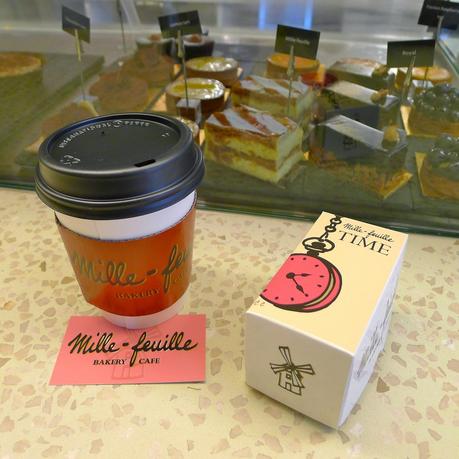
Once, in New York City, a French bakery named Millefeuille
sold me... a Millefeuille
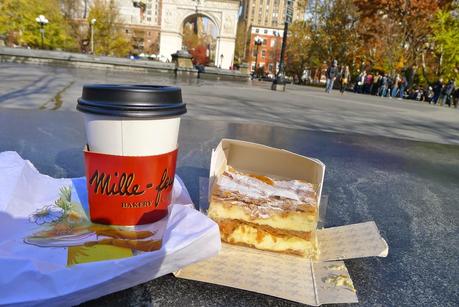
... which I enjoyed with a beautiful view.
2. The Millefeuille origins are shrouded in mystery (Keep them guessing.)
Its origins can be traced back to the 17th century (when it was mentioned for the first time in a French cookbook,) but who invented it? Mystère...
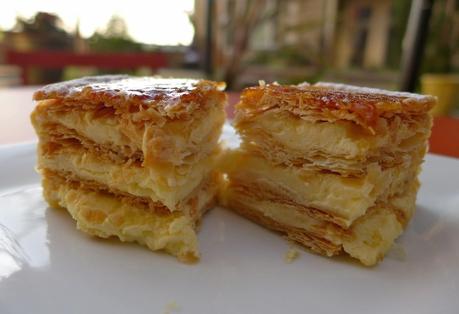
An American suburban version, nicknamed "Napoleon"
(trying to look taller, like its namesake, with three layers of crème anglaise!)
3. Le Millefeuille is more elegant than a Parisienne...
Monochromatic colors, simple, yet so effective: Dessert as haute couture. Delicate texture, with the juxtaposition of three layers of crisp, buttery pâte feuilletée (puff pastry,) and two layers of vanilla-flavored crème pâtissière. The eye-catching white icing top, with its etched design, for a perfect marbled or "combed" effect.
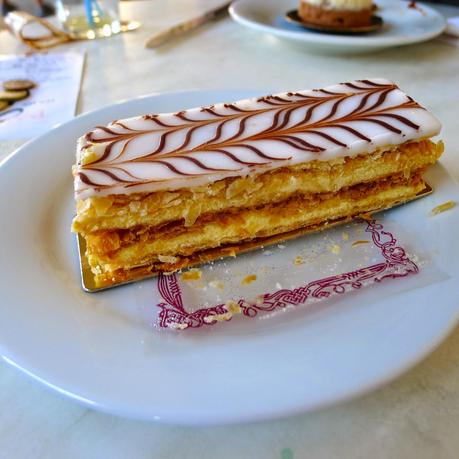
4. Imité, jamais égalé.
Imitated, but never duplicated.
Different varieties of Millefeuilles can be sampled all over the world. In France, renowned chefs love to put a new twist on the traditional pastry; even offering savory versions, with tomatoes, salmon, or Brie and apples. I have found my favorite Millefeuilles in unassuming French pâtisseries. I don't mind sampling new versions, but I have one rule: Whipped cream - or jam - is never an acceptable substitute for the crème anglaise filling!
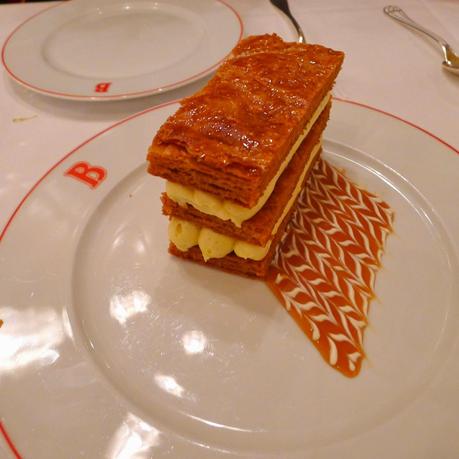
Creative icing work chez Benoît, New York City
5. Le Millefeuille commands love and respect.
Le Millefeuille is a delicacy, a moment of pure happiness and indulgence, and it should be approached as such.
Slice a Millefeuille like a traditional pastry, and you will soon be dealing with a gooey mess, crème pâtissière running away; puff pastry collapsing into a myriad of unsightly crumbs. Instead, use a serrated knife. Go from front to back, without pushing down on the crust, in one, swift motion. Like so:
I am fortunate to know a lady who makes the best French pâtisseries and viennoiseries in Seattle (no local croissant can touch Nora's, in my humble opinion.) I introduced her to my readers a while back. Remember that story? Nora recently moved Inès Pâtisserie to a new location, in the lively and eclectic Capitol Hill neighborhood. I was curious to check it out.
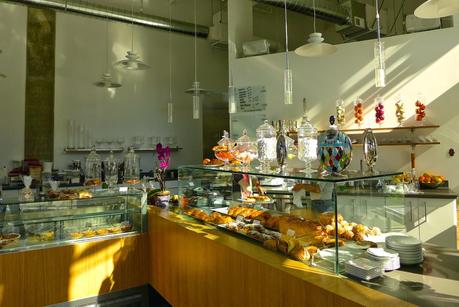
Inès Pâtisserie: Viennoiseries in full display!
This week, I called Nora and asked if she could make a Millefeuille for me to pick up on Sunday. It's not on the regular menu, you see. "Je ferai ça pour toi avec plaisir," she replied ("I will be happy to do that for you.") And so I went, and picked up my treasured Millefeuille - and a few other goodies too, since I was meeting French friends for coffee that afternoon. The verdict: Absolutely délicieux. Nora put her own spin on the original recipe, adding a bottom layer of raspberries, a touch of rum in the crème anglaise, and substituting a caramelized top for the traditional white fondant. Délicieux, indeed. Merci, Nora !
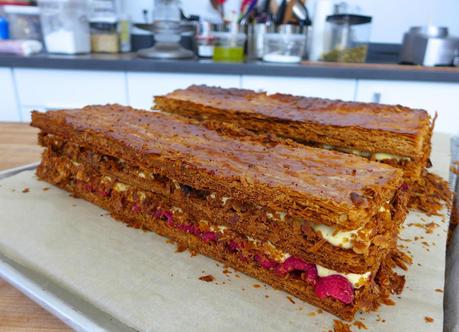
My giant Millefeuille (4 in. x 15 in.:)
I made two stops on the way home and shared it with friends!
Inès Pâtisserie
1150 11th avenueSeattle, WA
206.992.5186
Wednesday-Friday 8:00am-4:00pm
Saturday-Sunday 9:00am - 4:00pm

All photos by French Girl in SeattleDo not use, reprint or Pin without permission.
